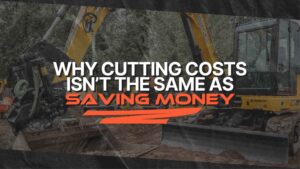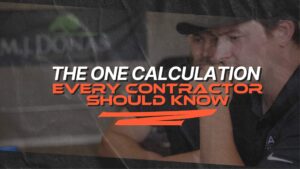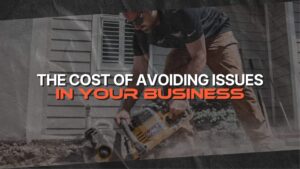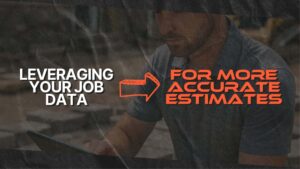How to Price Landscape Jobs for Profit
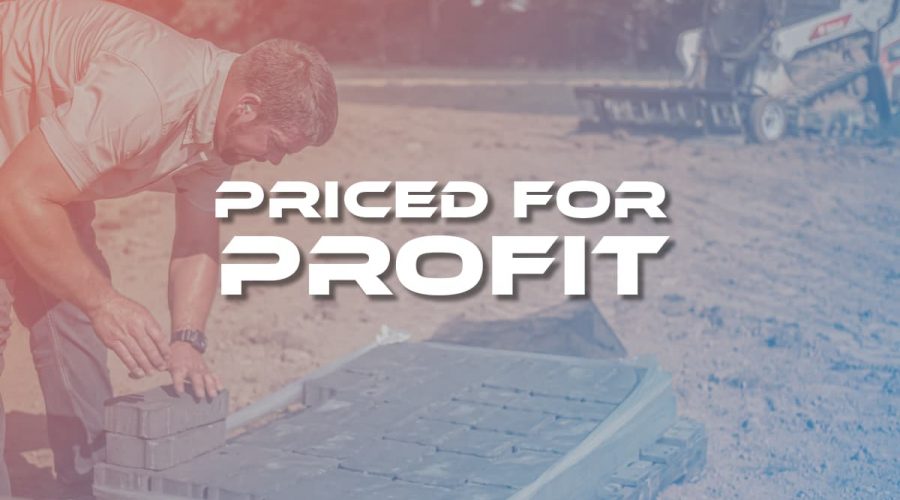
Searching for advice on how to price your landscape jobs for profit?
If you are a landscape contractor, there’s a good chance you know the feeling of agonized over a quote you were preparing for a customer. Am I charging the right price? Wondering if the way you did the math to come up with the number was the right way to do this. I mean, you did in fact estimate how long it would take based on your past experience, and then multiplied that by your hourly rate, right?
Where did that hourly rate come from anyway?
Did you just snoop around to see what your competitors were charging and then charge just a bit less?
If this is resonating with you, I’m sure you are familiar with this internal battle. Each time you prepare another quote, it’s the same emotional dilemma.
In fact, it is just plain overwhelming. You might be feeling frustrated with yourself. Why is this so hard? Why can’t I get any confidence and clarity on how to come up with the price I need to give to the customer. How do I deal with the fear of the client rejecting my number. Should I do a discount?
Not to mention that even if you charge more than you think you need, there’s never enough money in the bank. As soon as you think you see some savings, something breaks, or another large unexpected bill comes due. How can you factor those unknowns into your cost of doing business?
You might be thinking “I’ve gotta figure this out!” You’ve heard someone refer to the cost of doing business as “overhead.” But how on earth do you do the math on that when you’re building out a quote for a customer?
You’ve seen some threads on Facebook groups discussing what everyone is charging. A couple guys are saying they charge by the sq ft. But how do you factor all the above into a sq ft price? Not to mention the numbers the guys were throwing out in the comments varied by ton. For the same type of work.
But back to you now.
If you want to grow your business to where you dream for it to be, we’ve got to figure this out.
How do we filter through all the advice, and different ways of thinking? Is it even possible to discern from the good advice and the bad? You can’t afford to make a mistake. Your family and team is counting on you.
You do some googling. There’s an online course for everything these days. Should you pay a few hundred bucks for one of these courses from another contractor claiming to give you all their secrets to success?
If you can relate in any way with this struggle – believe me, you aren’t alone.
Every successful business owner you admire and aspire to be like, has been through this at some point in their journey.
The difference between the successful ones and the ones that chronically struggle is defined by one thing. Whether or not they’ve figured out how to successfully price every landscape job for profit. The ones that wing a price from their gut vs the ones that have applied the formula to price their jobs for profit.
Real profit. Net profit.
The kind that leaves you with cash in the bank. Even after you’ve paid all your bills. Even though you had that unexpected equipment breakdown. No problem. It’s paid. And you didn’t even stress about it.
One of the biggest battles when you’re starting out is fearing that the customer will tell you the price is too high. You need the work. You think that the price you’re charging is a lot of money. There’s no way you’ll sell the job for more than that, right?
Frankly, we all tend to make this mistake. We assume the client’s value of a dollar is the same as our own value of a dollar.
One time I was helping a landscape contractor go through his business’s numbers to help him come up with the correct formula to price his work in his new estimating software. When we had gone through all the numbers, and I had built the markup formula for his company, based on his actual numbers and cost of doing business, I asked him to pull up one of his recent quotes he had done for a real customer.
He pulled one up for a patio that he quoted. I asked him line by line what he had in the bid for materials, labor, equipment etc. After I was all done rebuilding that quote, with this new formula we had just built, I asked him what his total had been.
He told me $12,500.
I looked at the price my formula had generated.
It was $15,300.
He told me there’s no way he’d sell the job for $15,300. The client just wouldn’t go for it.
I punched a few keys in the estimate software and plugged his $12,500 number in just to see what that would do to the profit.
“Hey do you see this?” I asked him, pointing at the updated profit number on the screen.
It was a negative value. A loss. His net profit at the $12,500 number was a -3% loss.
It was literally costing him money to do that job. He wasn’t making anything.
Today, he’s no longer struggling with that stress and pain.
He took action.
He no longer estimates with a notepad, phone calculator, and gut feeling.
He uses an estimating software as his tool to ensure that every single quote he ever generates is priced for profit. All his overhead costs are automatically built right into the price. That clarity helps him to stand up to the client asking for a cheaper price, not to mention that voice in his head saying the customer will never go for that price. Today, he’s completely confident on asking for the number he needs.
His response to that request used to be that he’d knock a few bucks off. Now, he can look the client in the eye and state that he can adjust the scope of work to match the budget the client has, but he can’t adjust the price without changing the scope of work.
The “formula” I’ve mentioned a few times now, is the key here. It’s simply a process of building a company budget to determine your cost of doing business. Your overhead costs. Like your shop rent. Your trucks. Your fuel bills. Your equipment maintenance.
Once you’ve built your company budget to tally up all those overhead expenses, we just do a bit of math to figure out how much we need to mark up your direct expenses to also cover your indirect expenses.
Or in other words, if you’re building a patio: How much to mark up your cost on the pavers, stone, and labor to do the job, to also cover your costs of running your trucks, equipment, and shop rent.
Instead of taking your costs and applying a profit markup to your direct costs only, we also mark up for the indirect costs. Also known as overhead costs. It now looks like this:
(Your costs) X (overhead costs markup) X (profit markup) = Customer’s Price
If you start doing this in your own business, it will change your world.
You might even be able to lift your eyes a bit higher, and start thinking again about the goals you had when you started this business. A business that would provide freedom for you. Financial freedom. Security for your family. Freedom to spend more time with them. To see them grow up.
I’ve got good news for you. You can have this. This is not some elusive mirage that only the big dogs have.
You see, I’ve been there. The story above is written from experience. And I was determined to solve this problem, not only for myself, but for you too. We worked at this until we came out with an app that automates this whole thing. It automatically prices every quote for profit. You have complete transparency and control, and can see directly into the price makeup of every job.
And it goes one step further yet. It tracks your job as you do the work. Tracks your time, the materials you use, the equipment you run, everything.
And when you’re done, it’ll show you exactly where you estimated too much labor, or too little. Too much material, or too little. It’ll even tell you what part of the job took too long, or more material than you expected.
Basically, it tells you whether you made any money. Or not. And if you miss your goal, not only will you know it, but you’ll also be able to see why. So that you never need to repeat that same mistake again.
The definition of insanity is doing the same thing over and over again, while expecting different results.
You no longer need to repeat the same mistakes. Knowledge is power.
Ready to take action?
Book a call with me here.

Weston Zimmerman
CEO and co-founder
I’ll show you how to price your jobs for profit. Not only that, I’ll show you exactly how it works. How you can use this too. I’ll even help you get set up with it to get you rolling. You don’t need to figure this out on your own.
Say good bye to being frustrated. Say hello to the confidence that is going to propel your business to what you dreamed of. And beyond.
Related Articles
Why Time Tracking is Critical for Contractors
Cutting costs isn't the same as saving money. Learn how to use leverage, not panic, to drive real profit and...
Why Cutting Costs Isn’t the Same as Saving Money
Cutting costs isn't the same as saving money. Learn how to use leverage, not panic, to drive real profit and...
Slow Down to Speed Up
A quick leadership gut check: Are you building what really matters? Slow down, realign, and lead with intention.
The One Calculation Every Contractor Should Know
Contractors: If you’re not factoring in overhead, you're not pricing right. Learn how to calculate breakeven and stop guessing your...
What Owns Your Day? Urgency or Importance?
Stuck in a cycle of chaos and urgent tasks? Break the cycle with better systems, clear processes, and leadership that...
Taking Care of Your Team
Leadership isn't barking orders - it's listening, appreciating, and building problem solvers. Here's how to lead without burning out.
The Cost of Avoiding Issues in Your Business
Avoiding stuff in business adds up, with interest. Don't try harder, build systems that make success default. Do hard things,...
Leveraging Your Job Data for More Accurate Estimates
Stop estimating from the gut. Track time, collect job data, and turn it into faster, more accurate production rates.
How the Best Contractors Ensure Profitability
Running over estimated hours is one of the biggest silent profit killers in contracting. Here's how to track it, catch...
How To: Rank Higher on Google Search
Learn how to rank at the top of Google without spending thousands. This simple, free strategy levels the playing field...

